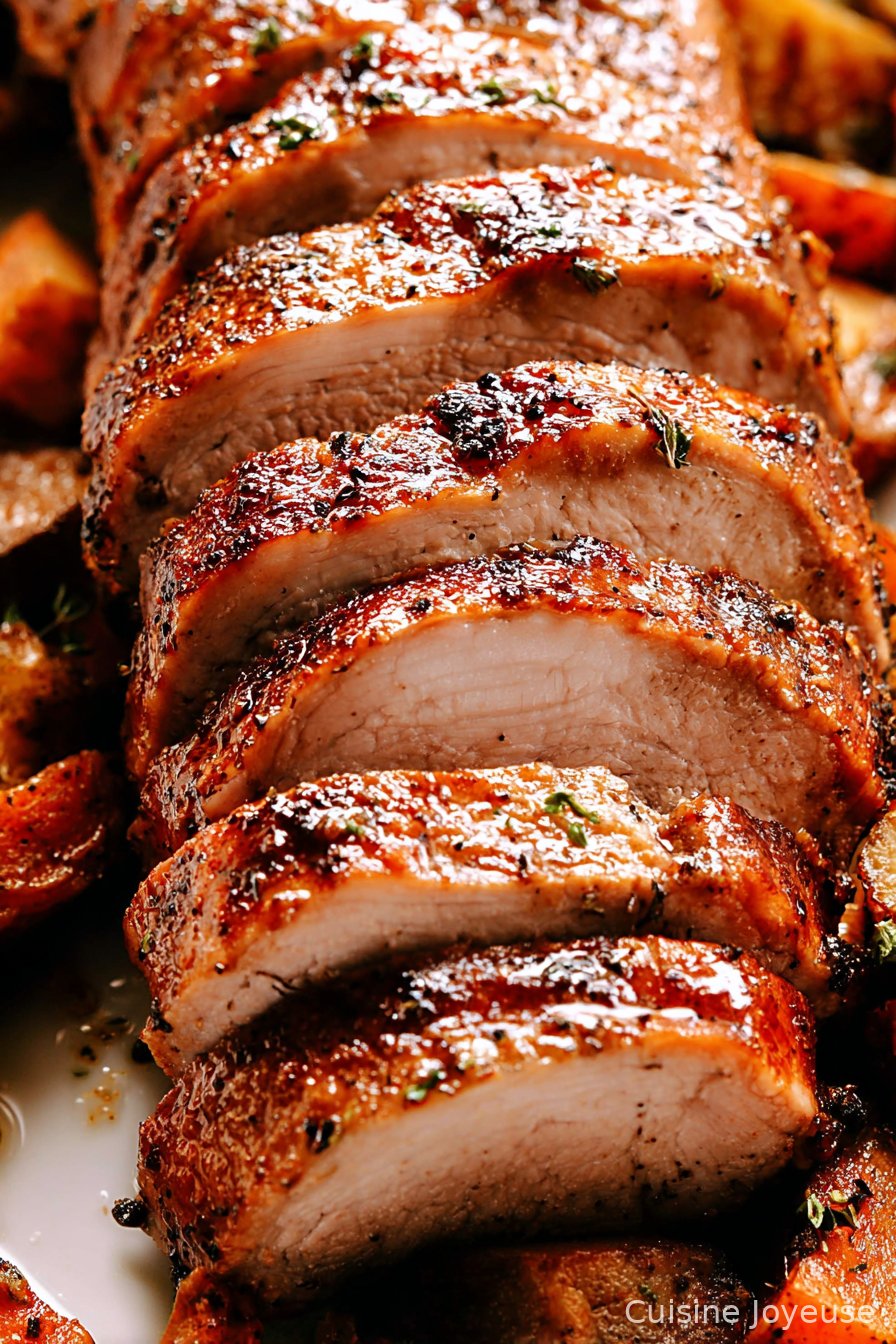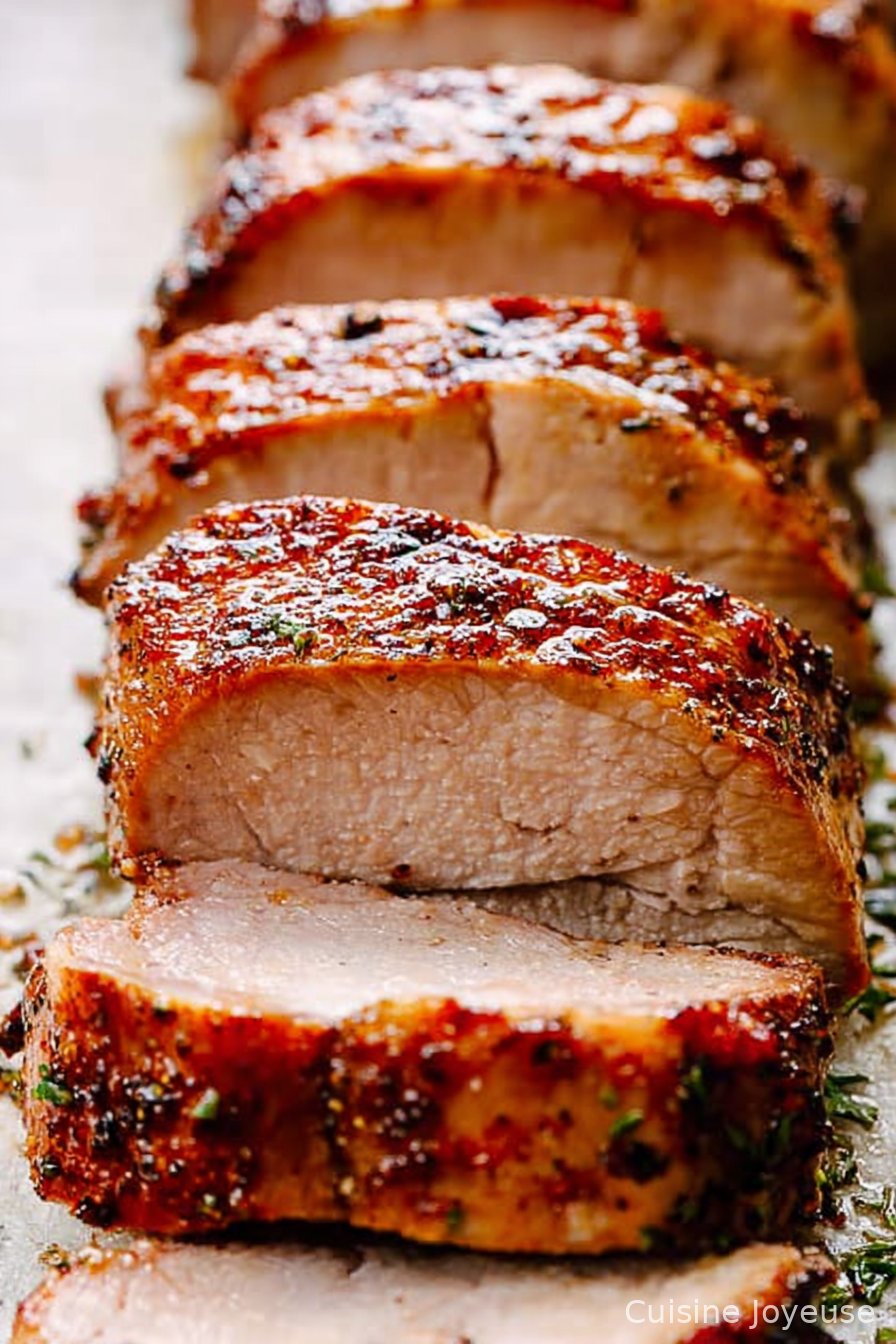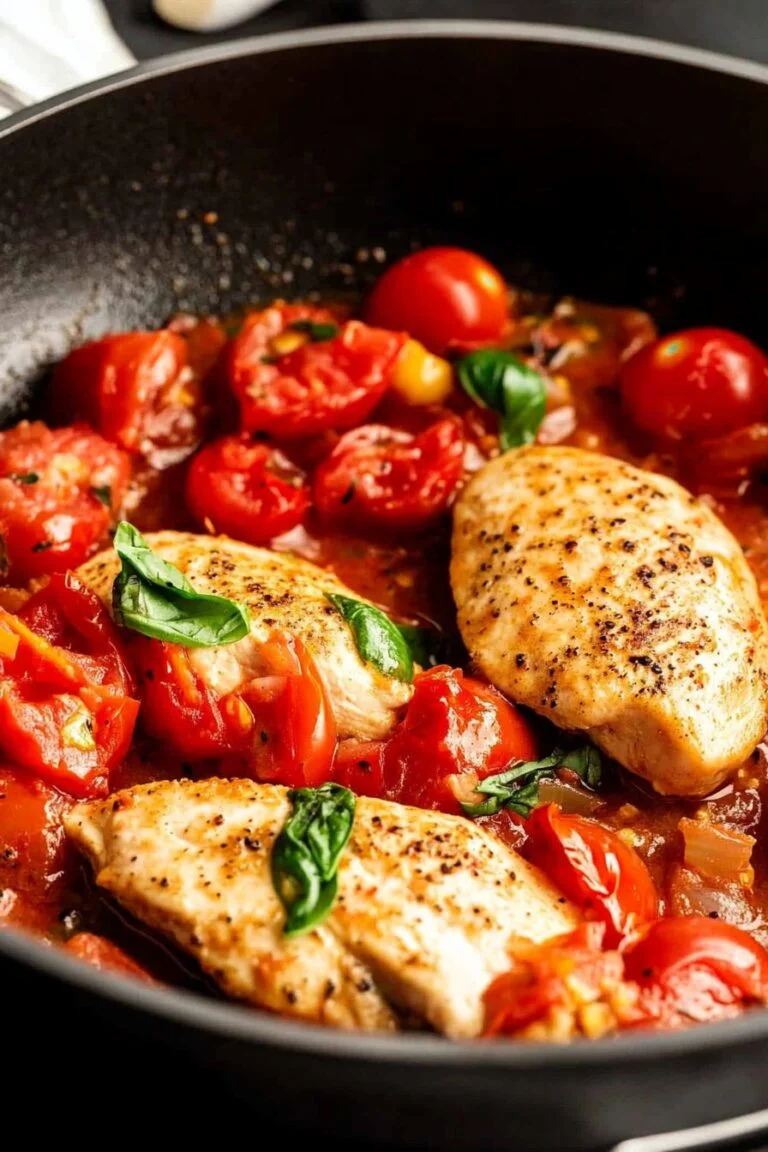Tender and Juicy Pork Loin Roast Recipe
Let Me Tell You About This Pork Loin (Grab a Chair!)
So, I’m not saying pork loin roast changed my life, but… okay, maybe a little. The first time I made it, I was convinced it would end up drier than a British sense of humor (no offense, Aunt Jean), but somehow—after a bit of panicked googling and a phone call to my mum—it came out surprisingly tender and juicy. There’s something about pulling a golden roast from the oven and seeing everyone’s face light up. Actually, last Christmas, my nephew tried to sneak a piece before dinner, and I caught him mid-bite. Didn’t even care about the scolding—said it was worth it. Kids, right?
Why I Keep Coming Back to This (And Maybe You Will Too)
I make this when I want to look like I’ve got my act together, even if my kitchen says otherwise. My family goes wild for it because, honestly, it’s one of those rare times everyone eats the same thing with no complaints (except that one time my brother-in-law asked for ketchup—still not over it). It’s great for Sunday dinner, or when you want leftovers for sandwiches. And if you’re like me and get a bit anxious about drying out pork (happened to me more than once), this recipe’s forgiving. The oven does most of the heavy lifting!
What You’ll Need (Plus a Few Swaps and Stories)
- 1 boneless pork loin roast (about 3 to 4 pounds — I’ve grabbed whatever’s on sale before, and it’s usually fine)
- 2 tbsp olive oil (sometimes I use canola if that’s what’s left, no biggie)
- 4 garlic cloves, minced (or the pre-minced jar stuff if it’s a busy day — my grandmother would probably faint, but oh well)
- 1 tbsp fresh rosemary, chopped (dried works too, just use about half as much)
- 1 tbsp fresh thyme, chopped (or honestly, Italian seasoning in a pinch, which I once used by accident and it turned out tasty)
- 1 tsp salt (or a generous pinch if you’re feeling rebellious)
- 1/2 tsp black pepper
- 1 cup chicken broth (I’ve used veggie bouillion cubes dissolved in water; works just fine)
- 2 tbsp Dijon mustard (regular yellow will do, but Dijon feels a bit fancy, doesn’t it?)
Let’s Get Cooking (Don’t Stress If It Gets Messy)
- Preheat your oven to 400°F (205°C). While it heats up, let the pork hang out on the counter for a bit. Not sure if that’s “by the book,” but I think it helps with even cooking.
- Mix the olive oil, garlic, rosemary, thyme, salt, and pepper in a little bowl. Smells good already. Rub this all over the pork. Get your hands in there—it’s a bit messy, but that’s half the fun.
- Heat a skillet (cast iron if you have it, but nonstick is fine) over medium-high. Sear the pork on all sides till it’s got a good color—about 2-3 minutes per side. (This is when the kitchen starts smelling like a Sunday feast. I usually sneak a tiny taste of the crust here, but shhh.)
- Pop the pork into a roasting pan. Whisk the broth and Dijon mustard together and pour it around (not over) the roast. You want the top to get all crispy, not soggy.
- Roast uncovered for about 20 minutes per pound. Start checking after 45 minutes—use a thermometer if you have one. You want 145°F (63°C) in the thickest part. Don’t have a thermometer? Poke it and see if the juices run clear. If it looks a bit pink, give it a few more minutes.
- Rest the roast for 10-15 minutes before slicing. Seriously, don’t skip this, even if everyone’s hungry. I learned the hard way—cutting too soon means dry pork. Trust me, it’s worth the wait.
Stuff I’ve Learned (Usually the Hard Way)
- If you overcook it, it’ll still taste okay with gravy (or, let’s be real, a splash of barbecue sauce).
- If you forget to let the pork rest, the juices run everywhere—so grab a book or scroll your phone for those 15 minutes.
- Sometimes I skip fresh herbs and just use whatever dried stuff is in the spice rack. Doesn’t really matter.
- If your roast is way thicker at one end, try to tuck the thinner bit under so it cooks more evenly. Or don’t; it’s not the end of the world.
Weird Experiments & Honest Misses
- Tried coating it with honey and soy sauce once. All I got was a burnt mess (but the edges were edible, so there’s that).
- Swapped out Dijon for grainy mustard—it was a hit.
- Added potatoes and carrots to the pan. Turned out like a mini roast dinner; would do again.
What If You Don’t Have All the Gear?
Okay, so I used to think a meat thermometer was a must. Actually, I find it works better if I just trust my gut sometimes. No roasting pan? Use a baking dish. No skillet for searing? Brown it right in the roasting pan on the stove (carefully though, and don’t sue me if you burn yourself). You can line the pan with foil for easy cleanup—unless you like scrubbing, in which case, go wild.

How to Store It (If There’s Anything Left)
Wrap leftovers in foil or pop them in a sealed container in the fridge. Good for 3-4 days, though honestly, in my house it never lasts more than a day! Cold pork loin makes epic sandwiches, especially with a dab of leftover mustard. You can freeze slices too, but I think the texture isn’t quite as nice after thawing. Up to you.
How We Serve This (And You Probably Should Too)
We do thick slices, usually with mashed potatoes and some roasted veg—green beans if we’re feeling healthy, or Yorkshire pudding if we’re feeling fancy. Sometimes I’ll throw in a quick pan sauce like this one (which is honestly easy and makes everything taste posh). On a sandwich the next day, I pile on pickles and a bit of rocket—oh, and a fried egg if I’m feeling cheeky. My cousin swears by applesauce, but that’s never been my thing. To each their own!
What I Wish I’d Known (Learn from My Oops Moments)
- Don’t try to rush the resting step—it just doesn’t work out. I once tried slicing too soon because everyone was starving, and it was way drier than usual.
- If you cook it straight from the fridge, it tends to cook unevenly. Let it warm up a bit on the counter; it helps a ton.
- Don’t drown it in broth. I did that once and it came out more like a stew. Nice, but not what I was going for.
Real Questions I Get (And My Honest Answers!)
- Can I use pork tenderloin instead of loin roast?
- Not really the same thing, mate. Tenderloin cooks way faster—it’ll dry out if you use these timings. Try this tenderloin recipe instead.
- What if I don’t have Dijon mustard?
- No stress, use yellow mustard or even a bit of mayo in a pinch. Actually, I find it works better with grainy mustard sometimes.
- How do I keep the pork juicy?
- Don’t overcook. And let it rest. That’s the real trick. Oh, and don’t cover it with foil while it cooks—makes the crust soggy (ask me how I know).
- Can I make this ahead for a party?
- Sure, just slice it and reheat gently, covered, with a splash of broth. Tastes even better the next day, I think. But my friend Ben says it dries out (he’s wrong, but don’t tell him I said that).
Oh, and if you ever want to learn more about pork cuts, this guide was super helpful for me when I first started. Anyway, hope you love this as much as my lot does. If it flops, just call it ‘rustic’ and serve with a big grin.
Ingredients
- 1 (3 lb) boneless pork loin roast
- 2 tablespoons olive oil
- 1 tablespoon fresh rosemary, chopped
- 1 tablespoon fresh thyme, chopped
- 4 cloves garlic, minced
- 1 teaspoon salt
- 1/2 teaspoon black pepper
- 1 cup low-sodium chicken broth
Instructions
-
1Preheat the oven to 375°F (190°C). Pat the pork loin roast dry with paper towels.
-
2In a small bowl, mix together olive oil, rosemary, thyme, garlic, salt, and black pepper to form a paste.
-
3Rub the herb paste evenly over the entire surface of the pork loin.
-
4Place the pork loin in a roasting pan. Pour the chicken broth into the bottom of the pan.
-
5Roast in the preheated oven for 1 hour and 10 minutes, or until the internal temperature reaches 145°F (63°C). Baste the pork with pan juices halfway through cooking.
-
6Remove from the oven and let the pork rest for 10 minutes before slicing and serving.
Approximate Information for One Serving
Nutrition Disclaimers
Number of total servings shown is approximate. Actual number of servings will depend on your preferred portion sizes.
Nutritional values shown are general guidelines and reflect information for 1 serving using the ingredients listed, not including any optional ingredients. Actual macros may vary slightly depending on specific brands and types of ingredients used.
To determine the weight of one serving, prepare the recipe as instructed. Weigh the finished recipe, then divide the weight of the finished recipe (not including the weight of the container the food is in) by the desired number of servings. Result will be the weight of one serving.
Did you make this recipe?
Please consider Pinning it!!







